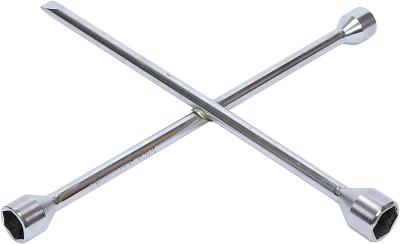
The Ford Escape braking system includes all-wheel disc brakes. While disc brakes offer a higher level of braking performance, namely shorter stopping distance, replacing the brake pads in the rear presents a significant challenge vs. replacing the front brake pads. Those are easier to replace due to the ability to turn the steering wheel to access the caliper bolts. While more challenging, you can change the rear brake pads on your Escape with little previous experience.
Loosen the lug nuts on the rear wheels with a 21mm socket and ratchet or tire iron. Place the socket onto the lug nuts and rotate counterclockwise. Do not attempt to remove the lug nuts completely.
Place the jack beneath the frame near the rear bumper of the Ford. Lift the vehicle and place jack stands beneath the frame.
Remove the lug nuts and the wheels from the rear wheel bolts.
Remove the two caliper bolts on both brakes. The caliper bolts are on the side of the caliper next to the fuel tank. Spray the caliper bolts with chain lubricant if they are difficult to remove. Because of the location of the upper bolt, it will be difficult to get the proper leverage to apply enough torque to break the grip of rust.
Pull the calipers from the rear brake rotors. Place the calipers on the rear tires.
Inspect the rotors. The rotor surface should be smooth and otherwise unremarkable. If the rotors are damaged, replace or resurface to ensure proper brake function.
Pull the worn brake pads from the calipers. The pads are hooked to the calipers by metal clips that can be slid from the sides of the caliper.
Place a drip pan beneath the location of the brake fluid bleed valve.
Open the brake fluid bleed valve with a 10mm wrench. Place the vise-grip pliers around the caliper piston and the outside wall of the caliper. Squeeze the piston against the inner wall of the caliper. The brake fluid will flow from the bleed valve into the drip pan.
Apply brake grease to the caliper piston at the point that it meets the caliper wall. This will provide the proper lubricant for piston movement. Close the brake fluid bleed valve with the 10mm wrench.
Slide the new brake pads onto the walls of the caliper. Return the caliper to the rotors.
Return the caliper bolts into the calipers and tighten them with the 13mm socket and ratchet.
Return the rear wheels to the wheel bolts and screw on the lug nuts by hand.
Remove the jack stands and lower the vehicle with the jack, to the ground.
Tighten the lug nuts on the rear wheels with the tire iron.
Press the brake pedal slowly three times. The pedal will offer the normal level of resistance when the fluid is returned to the rear brakes.
Open the hood. Open the master cylinder cap located near the windshield on the driver's side. Fill the container with the brake fluid to within 1/4 inch of the top.